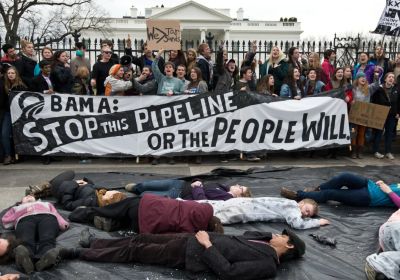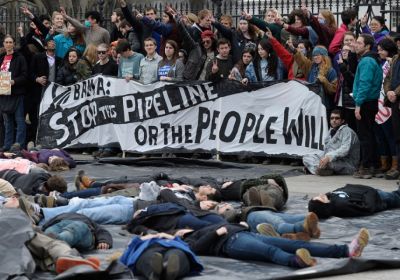-
-
-

After seven years of intense public campaigning on the Keystone XL, a pipeline that would have bisected the United States carrying the world's dirtiest oil, US President Barack Obama denied Canadian oil company TransCanada a presidential permit for construction on November 6.
Keystone XL
Keystone XL

